They Ain't Heavy
Sep 21, 2011
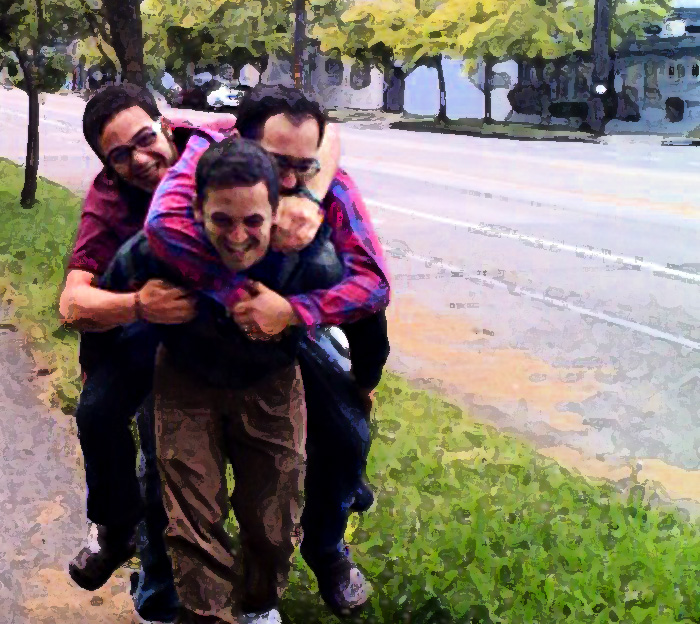 Stein boys doing their brotherly whatever on the street last summer in Seattle. From the bottom: brothers number 4, 1, and 5.
Stein boys doing their brotherly whatever on the street last summer in Seattle. From the bottom: brothers number 4, 1, and 5.
Sep 21, 2011
 Stein boys doing their brotherly whatever on the street last summer in Seattle. From the bottom: brothers number 4, 1, and 5.
Stein boys doing their brotherly whatever on the street last summer in Seattle. From the bottom: brothers number 4, 1, and 5.
Sep 24, 2011
Sep 28, 2011
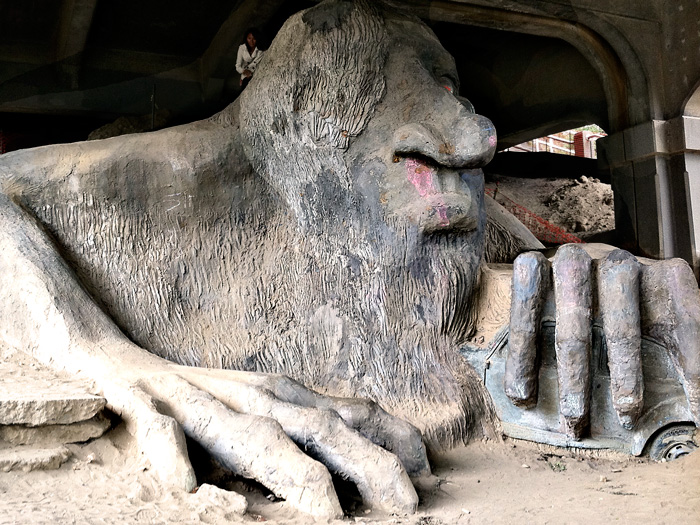 There's a troll underneath the Fremont bridge in Seattle, with a Volkswagen in its grip. The three billy goats gruff, in rusty cast iron, are grazing on a church lawn a couple of blocks away, at the corner of Troll Avenue and 35th Street.
There's a troll underneath the Fremont bridge in Seattle, with a Volkswagen in its grip. The three billy goats gruff, in rusty cast iron, are grazing on a church lawn a couple of blocks away, at the corner of Troll Avenue and 35th Street.
Jun 24, 2012
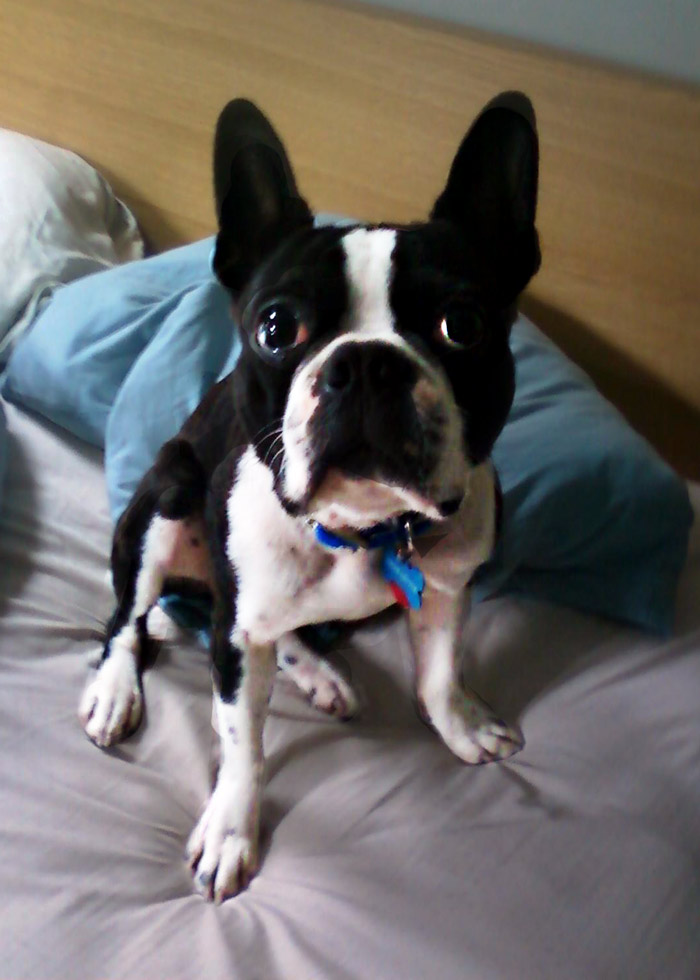 John and Bonnie in Seattle have a new dog, a year-old Boston terrier they call Omar Little, in memory of the best of the bad guys on The Wire. If the dog is really like the character, then he'll only rob or kill other bad guys, and once a month he'll take his mother to church.
John and Bonnie in Seattle have a new dog, a year-old Boston terrier they call Omar Little, in memory of the best of the bad guys on The Wire. If the dog is really like the character, then he'll only rob or kill other bad guys, and once a month he'll take his mother to church.
Aug 2, 2012
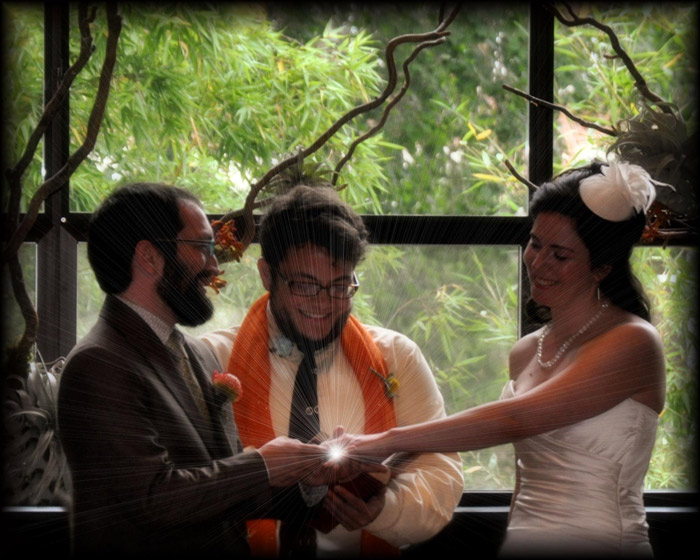 Our son John Stein and Bonnie Strelitz were married last weekend in Seattle. I don't remember the rings sparkling quite this much, but the sun was smiling and the stars all a-whispering their warmest good wishes.
Our son John Stein and Bonnie Strelitz were married last weekend in Seattle. I don't remember the rings sparkling quite this much, but the sun was smiling and the stars all a-whispering their warmest good wishes.
Aug 3, 2012
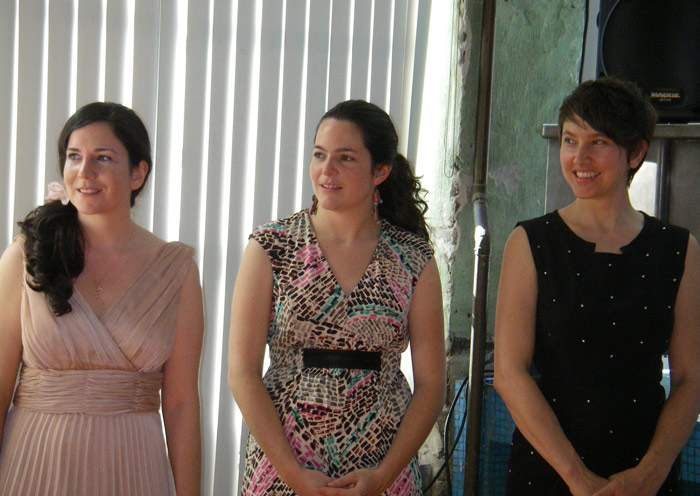 Before last weekend's wedding, Bonnie the bride rehearsed with her attendants: her sister Caroline and longtime friend Katie. After the wedding, John the groom goofed around with his attendants: his brothers Ted, Joe, Allen, and Hank.
Before last weekend's wedding, Bonnie the bride rehearsed with her attendants: her sister Caroline and longtime friend Katie. After the wedding, John the groom goofed around with his attendants: his brothers Ted, Joe, Allen, and Hank.
Aug 9, 2012
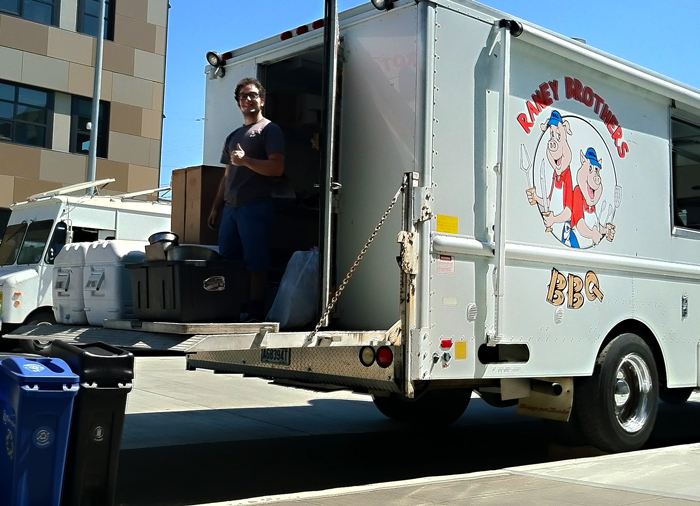 Hank interrupts his cleanup work to give us a thumbs-up from the back of the Raney Brothers BBQ truck in downtown Seattle.
Hank interrupts his cleanup work to give us a thumbs-up from the back of the Raney Brothers BBQ truck in downtown Seattle.
Aug 31, 2012
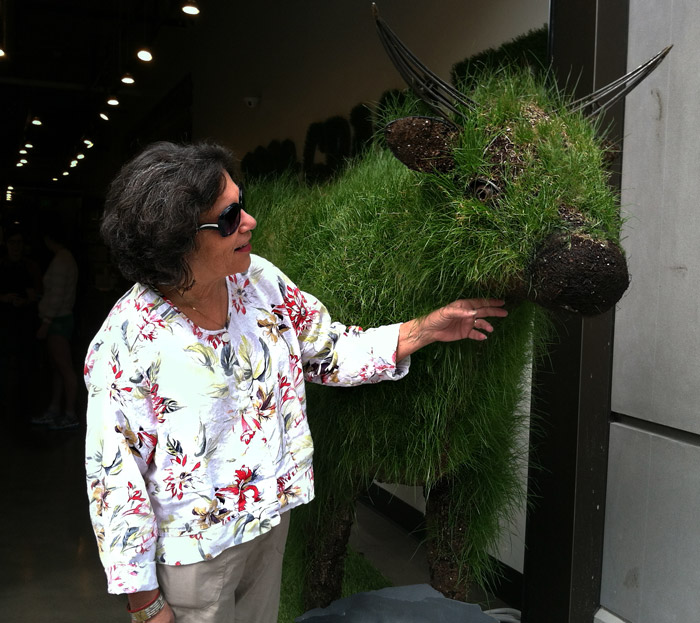 Miss Tina pets the cow at a gourmet frozen-food store in the Capitol Hill neighborhood of Seattle.
Miss Tina pets the cow at a gourmet frozen-food store in the Capitol Hill neighborhood of Seattle.
Sep 7, 2012
 At John and Bonnie's wedding this summer, guests were encouraged to pose for pictures in a photo booth. The people in these shots are pretty much all related to me in some way or another, most through marriage, either mine or my son's.
At John and Bonnie's wedding this summer, guests were encouraged to pose for pictures in a photo booth. The people in these shots are pretty much all related to me in some way or another, most through marriage, either mine or my son's. 
Nov 8, 2012
 After the wedding venue kicked everybody out around midnight, the party moved to a bar across the street.
After the wedding venue kicked everybody out around midnight, the party moved to a bar across the street.
Nov 29, 2012
 The landlord told the tenants in this little house in Seattle that the place needed painting, and that he and his guys would be taking care of it. And it was true, apparently, that it needed painting, and also true that the landlord and his guys came over recently to do the work.
The landlord told the tenants in this little house in Seattle that the place needed painting, and that he and his guys would be taking care of it. And it was true, apparently, that it needed painting, and also true that the landlord and his guys came over recently to do the work.
The job took two weeks. They painted a sunrise on this side of the house, and a sunset on the other side. Before then, both sides had been plain and gray.
The tenants say they like the house and they like the landlord, and it will take a lot more than this to get them to leave.
Feb 6, 2013
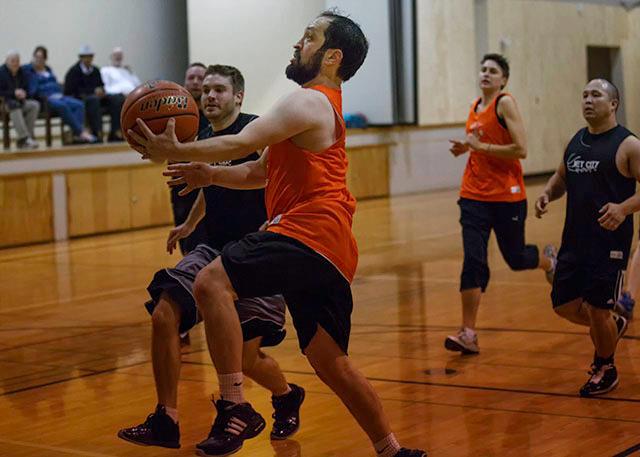 John "JJ" Stein goes up for what we assume has got to be a basket in league play with Seattle's Jet City Hoops in the gym at the Asian Resource Center.
John "JJ" Stein goes up for what we assume has got to be a basket in league play with Seattle's Jet City Hoops in the gym at the Asian Resource Center.
It's hard to know for sure, but the row of spectators sitting on stage might just be dazzled by the play of JJ and the other Cheetahs. Or their presence may reflect their interest in one of the Asian Resource Center's other resources.
Mar 7, 2013
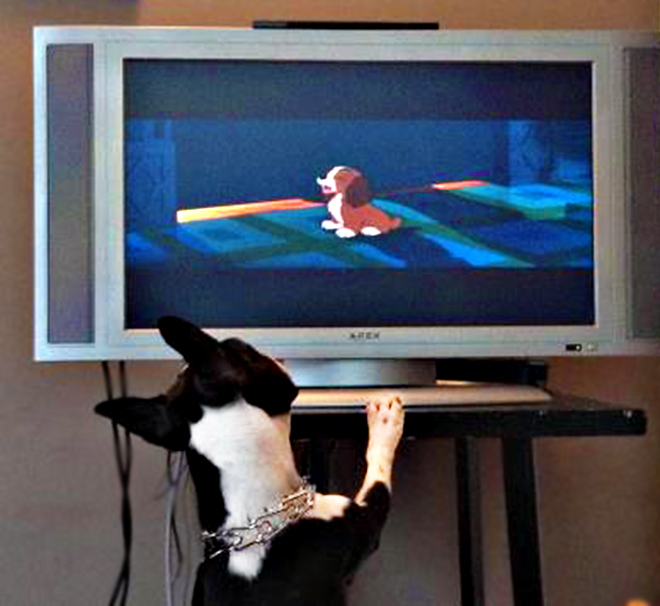
Omar the Boston Terrier, who is something of a cartoon dog himself, looks worried when the puppy starts to cry in Lady and the Tramp.
Jun 30, 2013
Jul 28, 2013
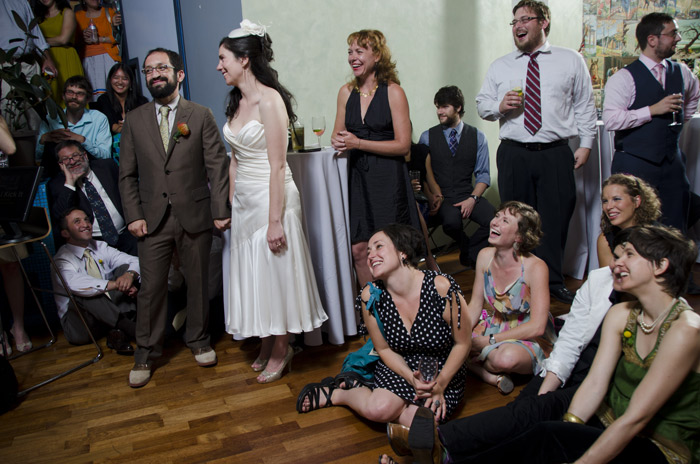 One year ago today, Bonnie and John, aka JJ, were married in Seattle. After the ceremony, we all enjoyed the toasts.
One year ago today, Bonnie and John, aka JJ, were married in Seattle. After the ceremony, we all enjoyed the toasts.
Now that the clutches of time have put in a claim on the newlyweds, we would like to mark the anniversary with words that are sweet yet also a little bit edgy; nothing appropriate comes to mind, but surely it was all said back then during those toasts.
Mar 30, 2014
Aug 9, 2014
Aug 10, 2014
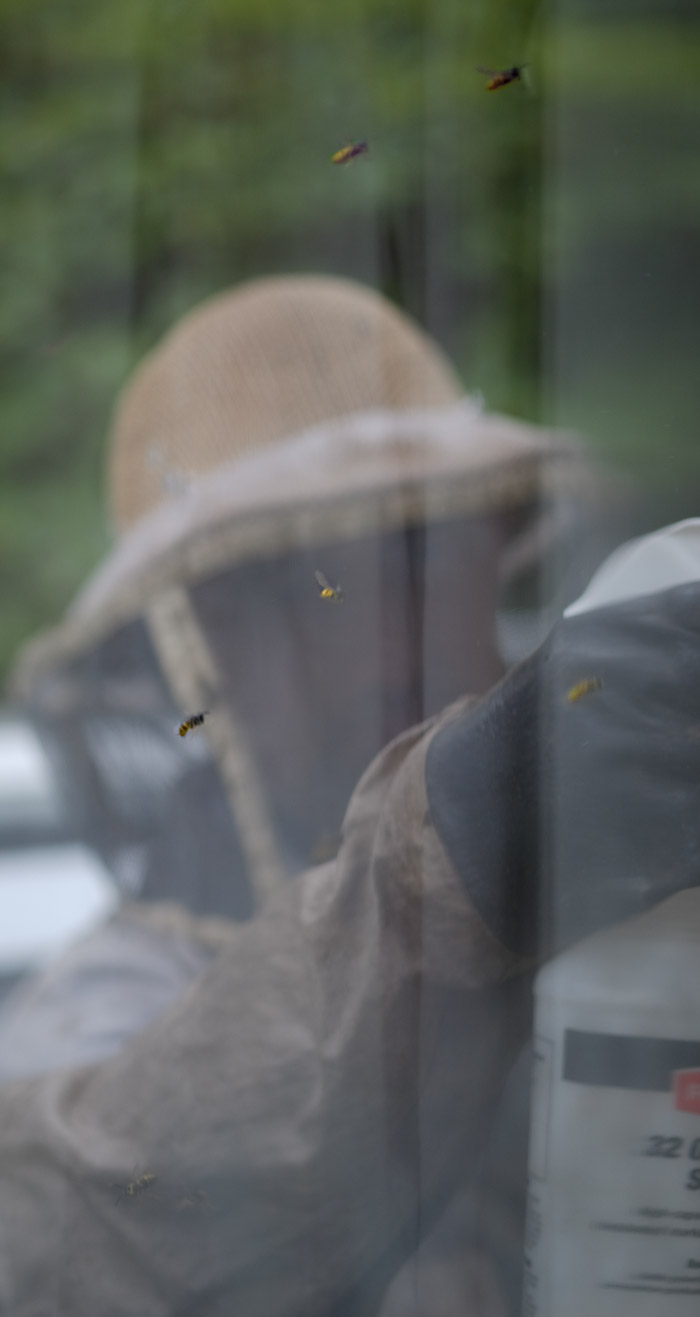 Above, in Seattle, getting rid of yellow jackets who've nested in the wall of the house beneath the shingles; below, in Philly, not yet getting rid of a wasp nest high in a tree on Kater Street.
Above, in Seattle, getting rid of yellow jackets who've nested in the wall of the house beneath the shingles; below, in Philly, not yet getting rid of a wasp nest high in a tree on Kater Street.
Aug 13, 2014
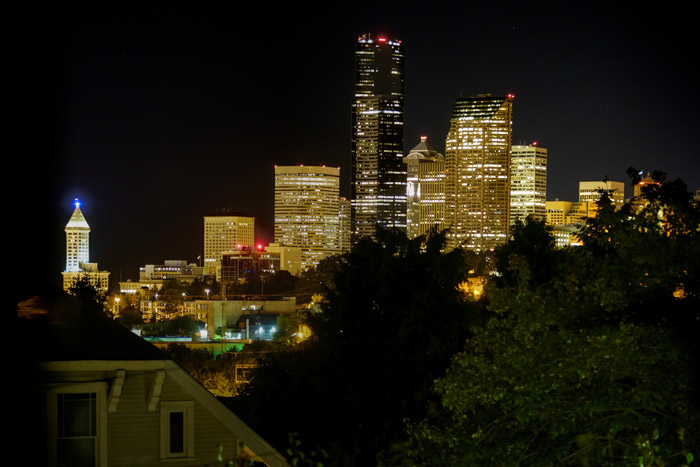 Downtown Seattle on a clear summer night, as seen from a hill near the stadiums.
Downtown Seattle on a clear summer night, as seen from a hill near the stadiums.
Aug 14, 2014

Water traffic is all backed up at Seattle's Ballard Locks on a sunny summer afternoon. Fortunately, there are a pair of locks straddling this dam, and even the smaller of the two–the lock shown here–can handle a couple of dozen small craft at a time.
The larger of the Ballard Locks was designed to allow passage by the largest ocean liner in existence, which at that time (1911) was the Lusitania. However, by the time the locks opened to traffic in 1917, the Lusitania had been sunk.
The boats in the photo above are all headed away from the City of Seattle and out toward saltwater; Puget Sound is just beyond the downstream end of the lock. Back upstream are numerous wharves and marinas and a couple of lakes. Although the Port of Seattle that handles today's largest tankers and container ships is accessed directly from the Sound, pleasure craft and smaller ships carrying more than a million tons of cargo still pass through these locks each year, utilizing smaller ports along the Ship Canal, including the homeport of much of the Bering Sea fishing fleet.
Depending on the tides and the water level of the lakes inland, the locks here raise or lower boats about 15 to 30 feet.
Nov 13, 2014
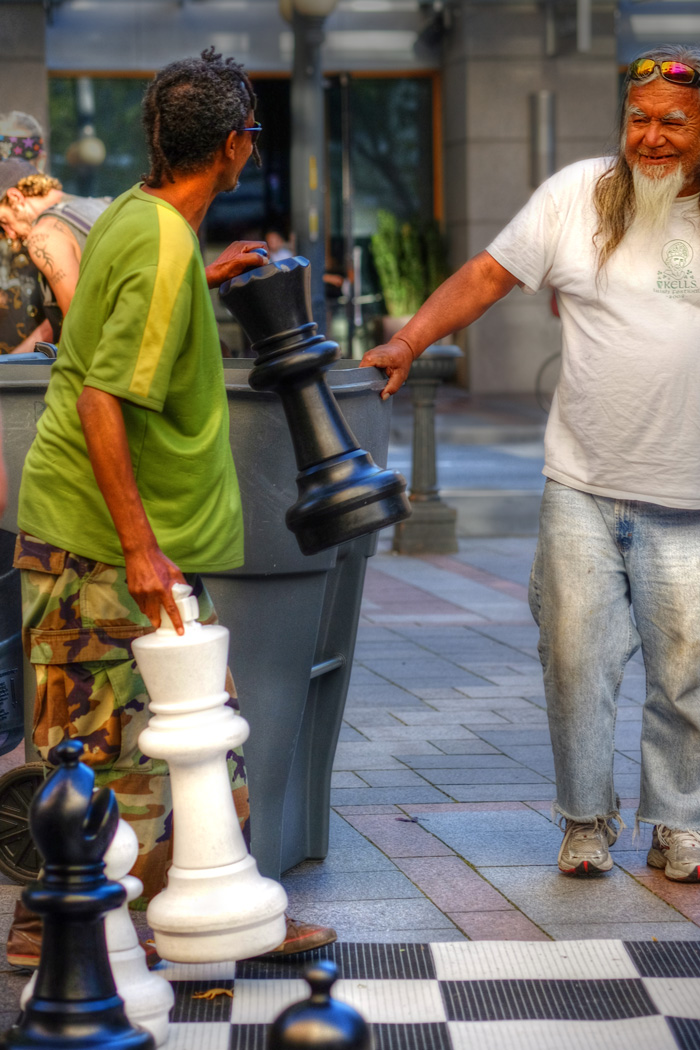 Picking up the pieces last summer in the plaza at downtown Seattle's Westlake Mall.
Picking up the pieces last summer in the plaza at downtown Seattle's Westlake Mall.
Nov 30, 2014
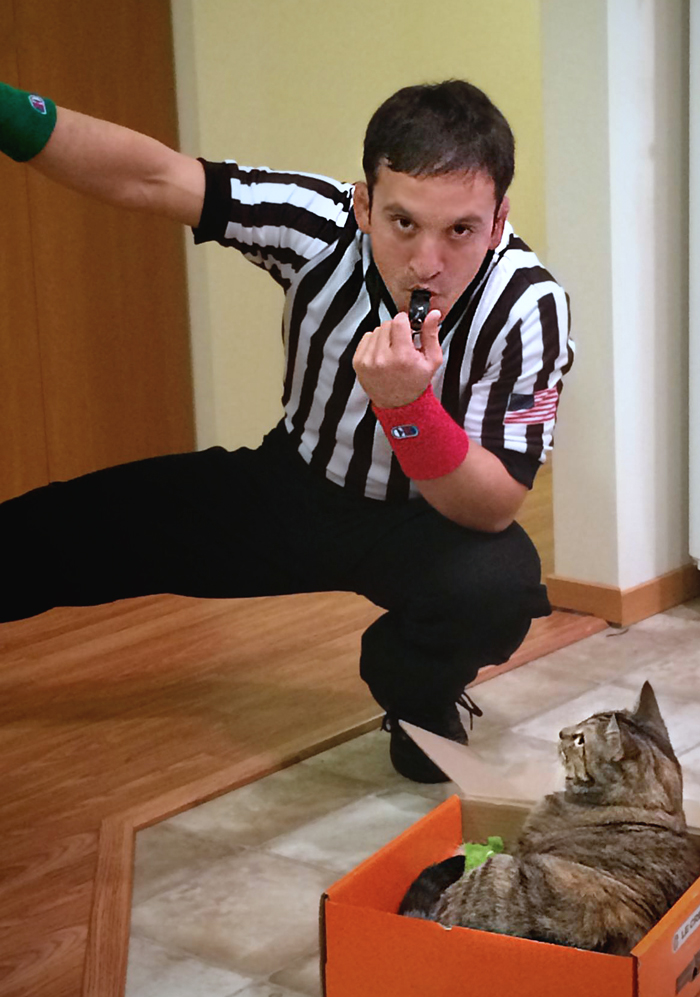 Long before football season has wound down, the winter sports are upon us. Basketball and hockey are in full swing, but what we see here is wrestling, or rather wrestling refereeing, as demonstrated for the enlightment of Ruby the cat, who chooses not to reveal whether or not she has chosen enlightenment.
Long before football season has wound down, the winter sports are upon us. Basketball and hockey are in full swing, but what we see here is wrestling, or rather wrestling refereeing, as demonstrated for the enlightment of Ruby the cat, who chooses not to reveal whether or not she has chosen enlightenment.
Jan 26, 2015
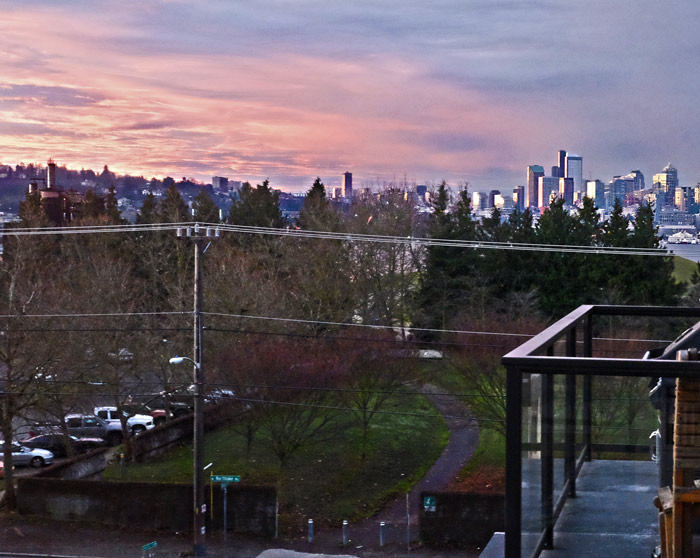 The sun rises over Gasworks Park and Lake Union in Seattle, or at least it tries to. The clouds scuttling into town from the the west (right edge of this picture) are about to roll all over the golden disk and thus reestablish normal winter gloom.
The sun rises over Gasworks Park and Lake Union in Seattle, or at least it tries to. The clouds scuttling into town from the the west (right edge of this picture) are about to roll all over the golden disk and thus reestablish normal winter gloom.
Feb 26, 2015
May 23, 2015
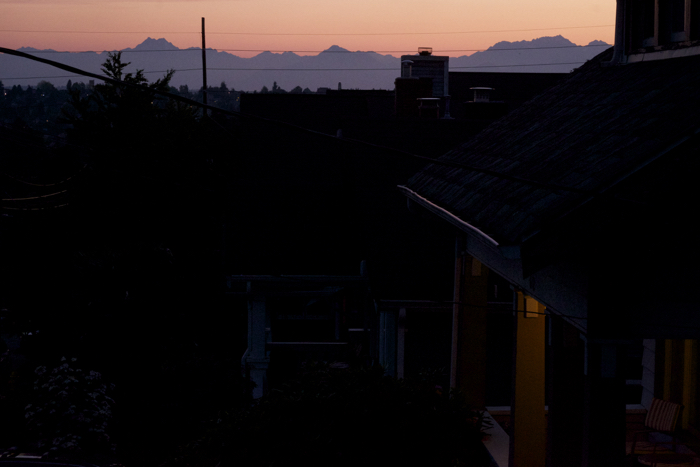 Night comes to NE 78th Street in Seattle.
Night comes to NE 78th Street in Seattle.
A few stray power lines hint at the electrical substation down the hill but don't even come close to hiding the Olympic Mountains on the horizon.
Feb 12, 2016
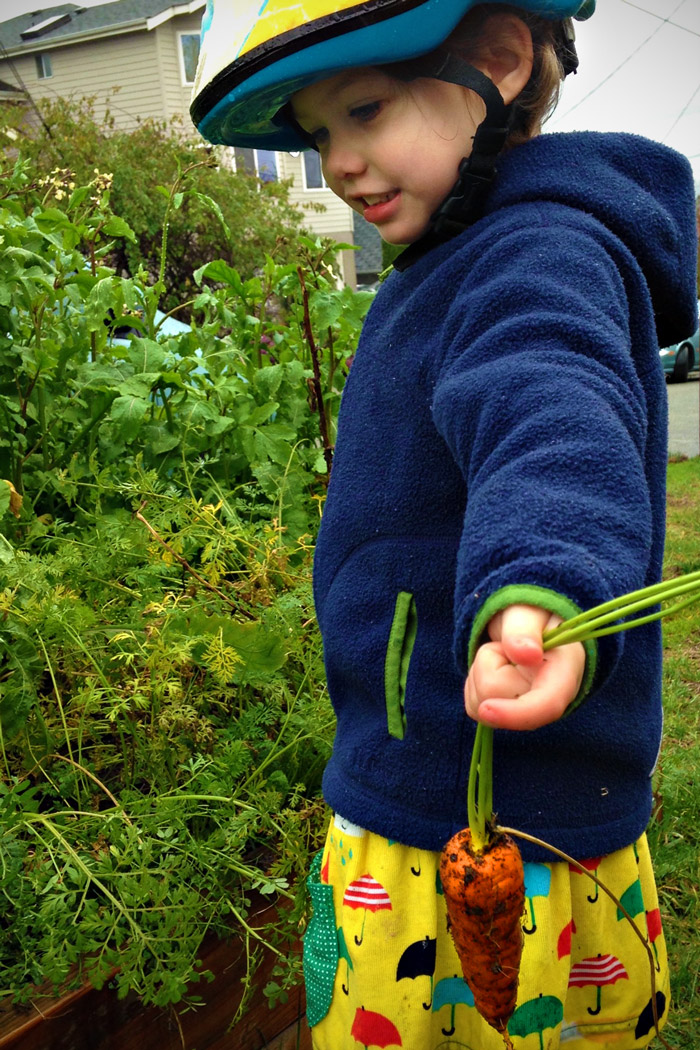 When Dia got off the bike yesterday, she found something orange and dirty but tasty-looking in the garden. February in Seattle must not be quite as hard on green stuff as February back east.
When Dia got off the bike yesterday, she found something orange and dirty but tasty-looking in the garden. February in Seattle must not be quite as hard on green stuff as February back east.
Mar 5, 2016
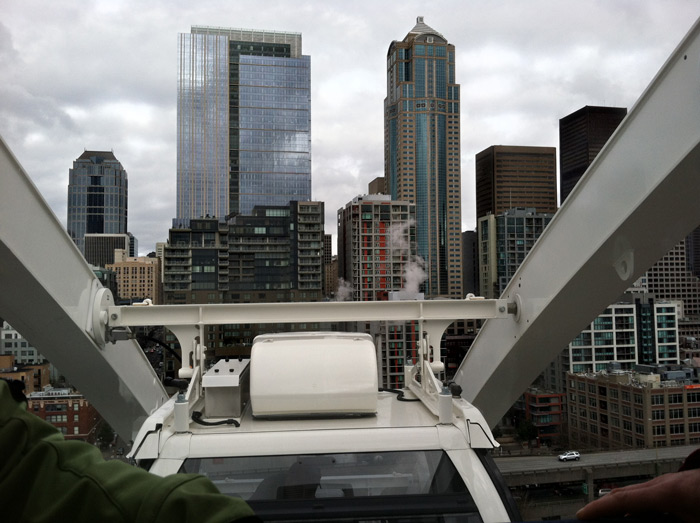 Downtown Seattle in the wintertime, as seen from the ferris wheel on the waterfront.
Downtown Seattle in the wintertime, as seen from the ferris wheel on the waterfront.
May 18, 2016
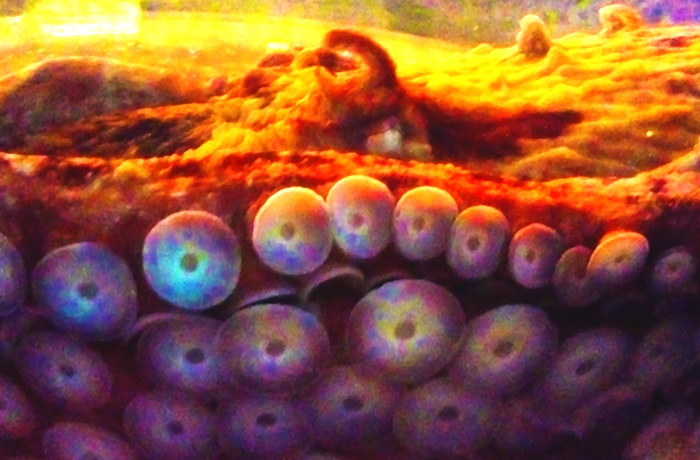 A Giant Pacific Octopus at the Seattle Aquarium posed recently for my mother to take a picture with her phone.
A Giant Pacific Octopus at the Seattle Aquarium posed recently for my mother to take a picture with her phone.
These varmints can weigh up to 150 pounds and spread their arms to wrap up a house. The 200 suckers on each arm are used to trap and hold prey, especially crabs and other crustaceans, which the octopus may paralyze with toxic saliva before tearing apart with its parrot-like beak.
To ambush its prey, the octopus hides amongst the rocks and seaweed, blending in with its surroundings by changing color at will. It can even change its texture, mimicking its surroundings by raising lumps or knobs of muscle.
The entire animal is so squishy and transformable that only its beaklike mouth sets a limit to its shape-shifting. If it wants to, a Giant Pacific Octopus can squeeze itself through a hole the size of a lemon.
Jan 10, 2017
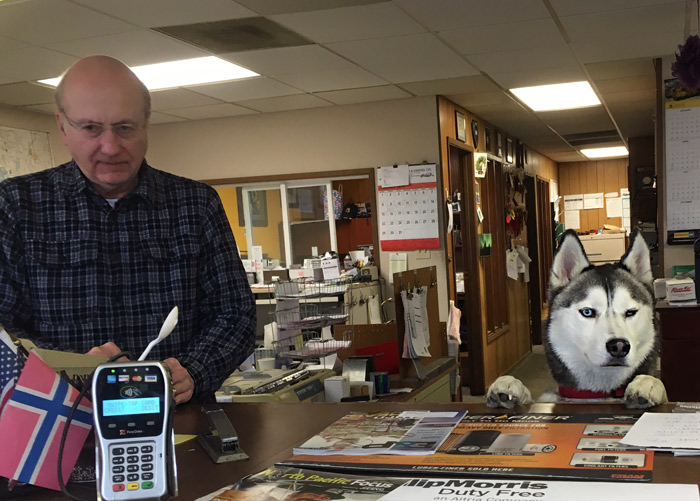 From personal experience, we can vouch for the fine customer service provided by the Siberian Husky behind the counter at Ballard Oil, a marine fueling and home heating oil terminal on the ship canal in Seattle.
From personal experience, we can vouch for the fine customer service provided by the Siberian Husky behind the counter at Ballard Oil, a marine fueling and home heating oil terminal on the ship canal in Seattle.
The other workers in the office also seemed like good people.
Jan 11, 2017
Jan 13, 2017
 She shows the shoes she chose.
She shows the shoes she chose.
Jan 18, 2017
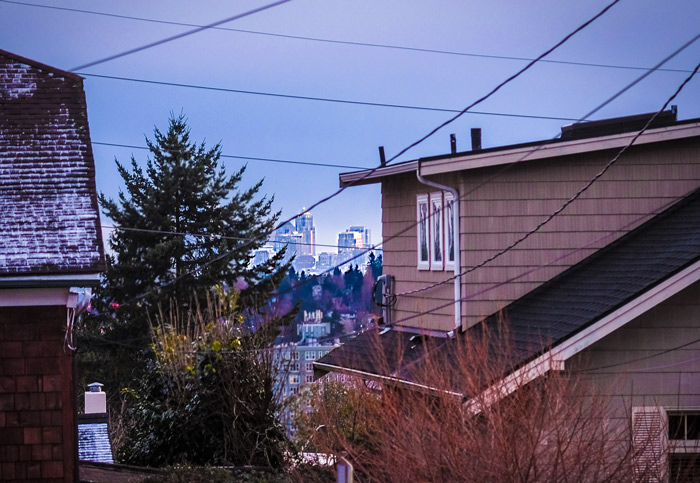 There was a leetle, teeny bit of snow in Seattle, and then a taste of sun. Fine winter days.
There was a leetle, teeny bit of snow in Seattle, and then a taste of sun. Fine winter days.
But that was then; now, the snow has melted and it's raining hard, and predictions are that it will rain forever. It's easy to see why Lewis and Clark, after they spent a long, wet winter in the Pacific Northwest, judged their entire expedition a failure; this part of the world that they'd struggled so hard to "discover" was chilly and gray and mildewy and just plain unliveable.
Jan 21, 2017
Feb 11, 2017
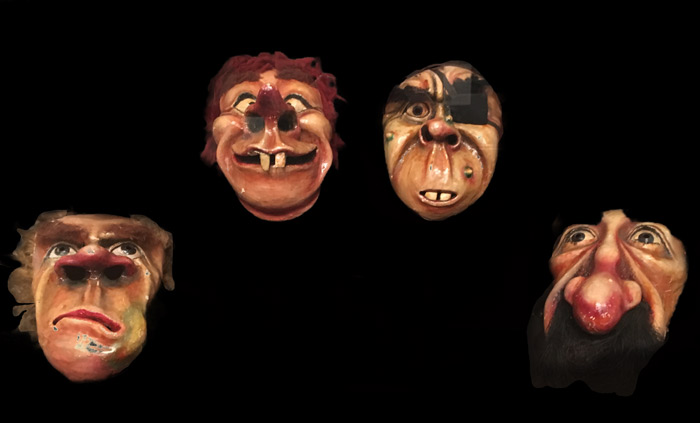 These papier-maché troll masks on display in Seattle's Nordic Heritage Museum were created by Norwegian-born Seattleite August Hansen Werner (1893–1980).
These papier-maché troll masks on display in Seattle's Nordic Heritage Museum were created by Norwegian-born Seattleite August Hansen Werner (1893–1980).
Although troll-themed masks were common articles of Norwegian folk art, these were different. Werner was a professional musician, an instructor at the University of Washington, and longtime conductor of the Norwegian Male Chorus of Seattle. He was also a painter and sculptor, and it is believed that he made these masks for operatic performances.
Feb 12, 2017
 A sample of lint from the trap in our clothes dryer yielded this strand of something: a hair, maybe, or some kind of fiber that is fixing to fail.
A sample of lint from the trap in our clothes dryer yielded this strand of something: a hair, maybe, or some kind of fiber that is fixing to fail.
We examined the lint with a scanning electron microscope, which magnified it about 927 times by shooting electrons at it and noting how they bounced back. If we'd had a regular old optical microscope, we might have been able to reach this same level of magnification, though we'd be approaching the upper limits of that technology.
Electron microscopes can detect details hundreds of times smaller than optical scopes because electrons travel in more or less straight paths while visible light undulates in waves. The downside is that electrons can't see in color and can't travel much beneath the surface of things, no matter how transparent or translucent that surface might be.
All in all, however, if lint is what you're wanting to look at, then a scanning electron microscope might be just the tool for the job.
With its help, we calculated the width of this strand of whatever it is at about 20 microns–about one fiftieth of a millimeter. The hairs on our heads are usually more like 50 microns in diameter, so this probably isn't that.
This strand of whatever it is has obviously been through the wringer, even though our current washing machine doesn't have a wringer. The strand has been stressed, and were it not for a couple of microns of badly fraying inner strength at its core, it would have snapped completely.
Which does lead to speculation that what we're looking at here is My Last Nerve. . . .
But there are some other possibilities. Such as dog hair: dog hairs average about 25 microns in diameter, more or less in the same ballpark as this strand. Dog hairs often show a scaly pattern on their outer cuticles that looks kinda like the faint pattern we can sorta make out on what's left of the outer surface of this thing. And of course, finding a dog hair in the lint trap at our house, or pretty much anywhere else in our house, isn't completely freakish.
But really: could a dog hair get this mangled and shredded just from normal laundry processes? We want to beg off from a definitive answer; although we've worn many different hats over the years, we have never, ever presented ourselves as expert in the forensic analysis of dog hairs.
We've not yet, however, run out of options. Couldn't this thing be a fabric fiber from some item of clothing?
That electron microscope sure did come in handy.
Feb 27, 2017
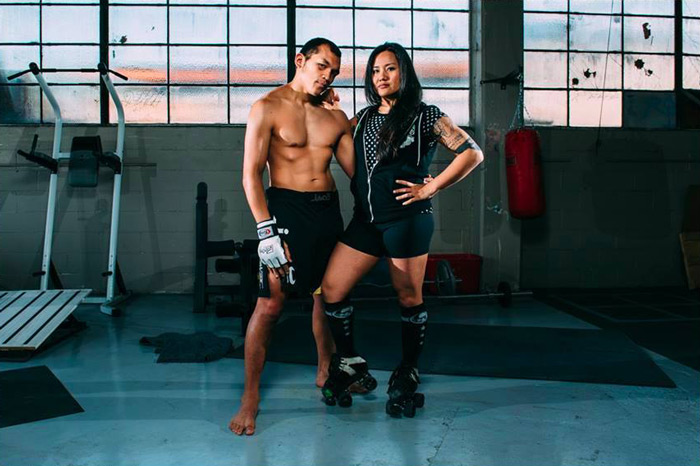 Andy "Brunso" Paves and Michel "Jean Claude Van Damsel" Anais, married since 2015, have parlayed professional sports into advanced degrees and non-sports professions.
Andy "Brunso" Paves and Michel "Jean Claude Van Damsel" Anais, married since 2015, have parlayed professional sports into advanced degrees and non-sports professions.
Andy's professional MMA cage-fighting record is 5–1, with two of his wins by submission. He recently completed his PhD in clinical psychology at the University of Washington and is currently interning in Honolulu.
Skating for Seattle's Sugar Skulls roller derby team, Michel won all-star acclaim on the banked track and earned her MSW at the University of Washington.
Mar 13, 2017
Mar 22, 2017
 This showed up the other day on the wall next to a parking lot in our (Seattle) neighborhood.
This showed up the other day on the wall next to a parking lot in our (Seattle) neighborhood.
Mar 24, 2017
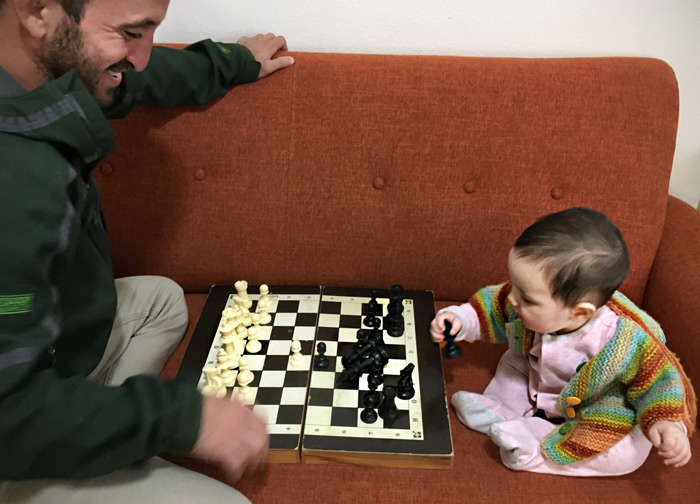 You know what they say: yes, it looks impressive, but the fact is that Allen probably beats his niece two games out of three.
You know what they say: yes, it looks impressive, but the fact is that Allen probably beats his niece two games out of three.
Jan 11, 2018
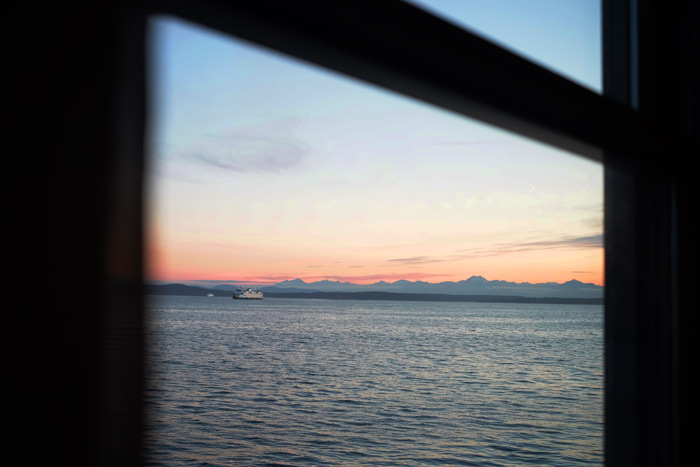 The Bainbridge Island ferry and the Olympic Mountains at sunset, as seen across Elliott Bay from the bar at Pier 67 near downtown Seattle.
The Bainbridge Island ferry and the Olympic Mountains at sunset, as seen across Elliott Bay from the bar at Pier 67 near downtown Seattle.
Mar 7, 2018
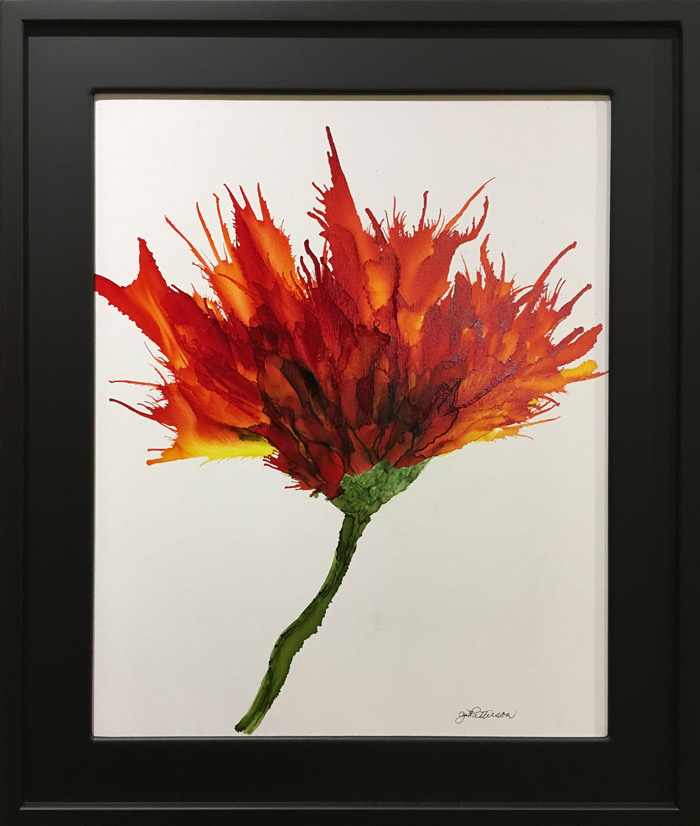 "I Stand Alone," an ink drawing by Janice Patterson, won an honorable mention in the winter 2018 exhibit at University House Wallingford, Seattle.
"I Stand Alone," an ink drawing by Janice Patterson, won an honorable mention in the winter 2018 exhibit at University House Wallingford, Seattle.
Mar 25, 2018
 Our friends and neighbors who live in University House Wallingford joined the nationwide anti-gun/anti-Trump protest Saturday, braving the cold and the traffic to make sure their voices were heard.
Our friends and neighbors who live in University House Wallingford joined the nationwide anti-gun/anti-Trump protest Saturday, braving the cold and the traffic to make sure their voices were heard.
Most University House residents are in their eighties or nineties. At least one of the protesters is a centenarian. Some of them rarely leave home on foot, wary of the neighborhood's uneven sidewalks. But this was important.
They held up handmade posters calling for gun control and school safety, taking up positions at a major intersection where Saturday shoppers would have to take notice.
Cars honked in their honor. Pedestrians thanked them. One storekeeper distributed gifts–well, gag gifts, since that was the store's specialty: little plastic fingers they could use for pointing at their signs.
Another neighbor, who'd ventured out to the grocery store for a gallon of milk, bought candy bars for all the protesters.
Time will tell how the politicians will respond.